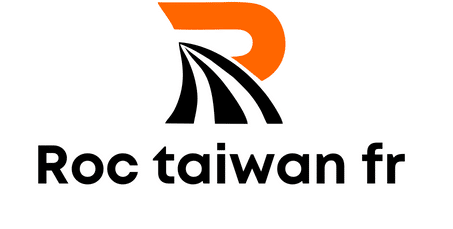What Are the Latest Trends in Residential Building Materials for Sustainable Development?

The building and construction industry is constantly evolving, driven by a myriad of influences, including technology, market demands, regulatory changes, and environmental concerns. One area that has seen significant change in recent years is the selection and use of building materials. Among the most notable trends is the shift toward sustainable and environmentally friendly materials.
Sustainable development in the construction industry involves using resources most efficiently and effectively, minimizing waste, and maximizing the lifespan of the building. This approach not only addresses environmental concerns but can also offer cost savings and enhanced building performance. Let’s delve into five key areas where these trends are playing out.
Lire également : What Are the Best Practices for Retrofitting Historic Buildings for Energy Efficiency?
1. Green Concrete
Concrete is one of the most widely used construction materials in the world. It’s versatile, durable, and relatively inexpensive. However, traditional concrete production is energy-intensive and contributes significantly to carbon emissions. This has sparked innovation in the development of "green" concrete, a more environmentally friendly alternative to traditional concrete.
Green concrete can involve a range of strategies, from using waste products as a partial replacement for cement to incorporating carbon capture technologies in the production process. For instance, researchers are effectively using fly ash, a byproduct from the coal industry, and slag, a waste product from steel production, to partially replace cement in concrete mixtures. These materials not only reduce the need for cement but also give the concrete additional strength and durability.
Avez-vous vu cela : How to Prepare a Real Estate Investment Plan for an Aging Population?
Another innovation in green concrete is carbon capture and storage (CCS). This technology captures the carbon dioxide produced during the concrete production process and stores it, which can significantly reduce the industry’s carbon footprint.
2. Energy-Efficient Design and Materials
Energy efficiency is a paramount concern in sustainable building. Incorporating energy-efficient design principles and materials can significantly reduce a building’s energy consumption and environmental impact.
One trend in this area is the use of high-performance insulation materials. Traditional insulation materials can be a significant source of energy loss. High-performance insulation materials, such as aerogel and vacuum insulation panels, offer superior thermal performance and can drastically reduce heat loss and gain.
In addition, energy-efficient windows and doors are becoming more popular. These products feature advanced technologies, such as double or triple glazing and low-emissivity (low-E) coatings, to minimize heat transfer.
Solar panels and green roofs are also becoming increasingly common in residential construction. These systems not only provide renewable energy and improve insulation but can also contribute to stormwater management and biodiversity.
3. Water-Conserving Materials and Design
Water conservation is another key aspect of sustainable construction. The construction industry is increasingly embracing water-saving technologies and materials to reduce water consumption and waste.
One trend in this area is the use of permeable paving materials. Permeable pavers allow rainwater to infiltrate the ground, reducing runoff and promoting natural water filtration. This is particularly beneficial in urban areas where impermeable surfaces contribute to stormwater runoff and pollution.
In addition, water-efficient fixtures and appliances are becoming standard in new residential construction. These products, including low-flow taps and showerheads and dual-flush toilets, can significantly reduce water use.
Rainwater harvesting systems and greywater recycling are also becoming more common in residential projects. These systems reuse rainwater and greywater (wastewater from sinks, showers, and washing machines) for non-potable uses, such as toilet flushing and irrigation, reducing the demand for fresh water.
4. Waste-Reducing Construction Techniques
The construction industry generates a significant amount of waste, much of which ends up in landfills. To combat this, the industry is increasingly adopting construction techniques that reduce waste.
Modular and prefabricated construction is one such trend. These techniques involve manufacturing building components off-site and then assembling them on-site. This process reduces waste generated during construction and can also improve construction speed and quality.
Another trend is the use of recycled and reclaimed materials. These materials can range from reclaimed wood and metal to recycled-content insulation and drywall. Using recycled and reclaimed materials not only reduces waste but can also add unique aesthetic appeal to a building.
5. Biobased Materials
Biobased materials are a growing trend in sustainable construction. These materials, derived from renewable plant and animal sources, offer several environmental advantages over traditional construction materials.
For example, biobased insulation made from sheep’s wool or cellulose (recycled paper) is renewable, recyclable, and can provide superior thermal performance compared to traditional insulation materials.
Another trend is the use of bioplastics in construction. Bioplastics are derived from renewable sources, such as corn or sugarcane, and are biodegradable. They can be used in a variety of applications, from pipes and cables to flooring and roofing materials.
Despite the challenges, the transition toward sustainable and environmentally friendly building materials demonstrates the construction industry’s commitment to reducing its environmental impact and promoting sustainable development. As these trends evolve and mature, they will continue to shape the industry and influence the way we build and live.
6. Smart Home Technology for Sustainability
The advancement in technology has led to the development of smart home systems that contribute significantly to sustainable living. These go beyond conventional appliances to incorporate systems powered by artificial intelligence and Internet of Things (IoT), which enables energy efficiency and conservation.
Smart thermostats, for instance, learn from homeowners’ habits, enabling them to control heating and cooling units in an optimal way to save energy. Similarly, smart lighting systems use motion sensors to control lighting, ensuring lights are only on when necessary, reducing energy consumption.
Another trend is the use of home energy management systems. These systems monitor the energy consumption of each device in the home and offer suggestions on how to use them more efficiently. They also allow homeowners to track their energy use in real-time, providing valuable data that can help them reduce their environmental impact.
Moreover, smart water management systems are being incorporated into residential buildings. They monitor water usage and identify leaks, helping homeowners conserve water. Smart irrigation systems are also gaining popularity. These systems use weather forecasts and soil sensors to determine when and how much to water, reducing water waste.
The trend towards smart homes is a clear indication of how the construction industry is leveraging technology to promote sustainable development. These smart systems not only contribute to energy efficiency and conservation but also offer homeowners the convenience of controlling their homes remotely.
7. Sustainable Landscaping
Sustainable landscaping is another trend that is gaining traction in the construction industry. Rather than focusing solely on the aesthetics of the landscape, sustainable landscaping focuses on creating a landscape that is in harmony with the local climate and environment.
Indigenous plants, which are naturally adapted to the local climate, are increasingly being used in landscaping. These plants require less water and care than exotic species, reducing water consumption and the need for potentially harmful pesticides and fertilizers.
Similarly, xeriscaping, a landscaping method developed for drought-prone areas, is becoming more widespread. Xeriscaping involves the use of drought-tolerant plants and efficient irrigation systems to conserve water.
Moreover, edible landscaping is also a trend in sustainable landscaping. This involves incorporating edible plants, such as vegetables, fruit trees, and herbs, into the landscape. Edible landscaping not only provides fresh produce but also contributes to biodiversity.
Sustainable landscaping is a practical and effective way of enhancing the sustainability of residential buildings. It not only reduces the environmental impact of the landscape but also enhances its aesthetic appeal and functionality.
Conclusion
The trends in sustainable building materials and techniques are evolving at a rapid pace, driven by the need to mitigate the environmental impact of the construction industry. From the use of green concrete and high-performance insulation materials to the integration of smart home systems and sustainable landscaping, the industry is making significant strides toward sustainable development.
The shift toward sustainable and eco-friendly building materials and methods is not just a trend, but a necessary evolution in the construction industry. These innovations are helping to create buildings that are not only more energy-efficient and environmentally friendly, but also more comfortable and cost-effective for homeowners.
While the transition to sustainable construction is not without its challenges, the benefits of this approach far outweigh the hurdles. As these trends continue to evolve, they will significantly shape the future of the construction industry and offer exciting possibilities for sustainable living. It is important for all stakeholders in the industry, including architects, builders, and homeowners, to embrace these trends and contribute to the creation of a more sustainable built environment.
